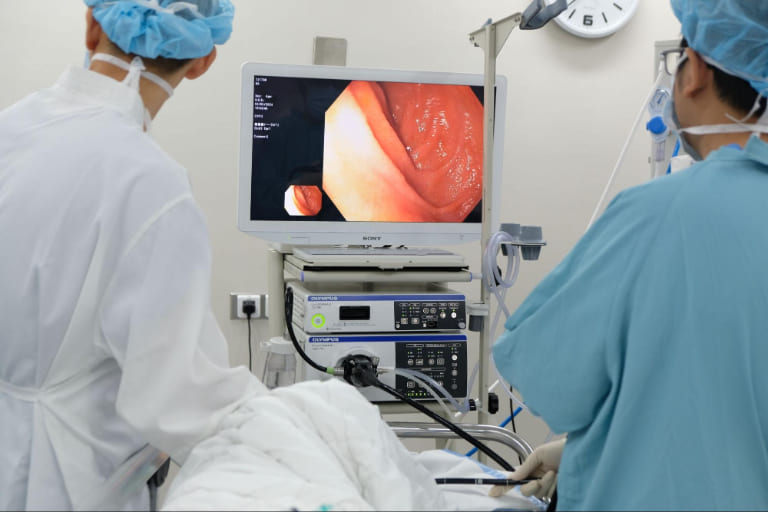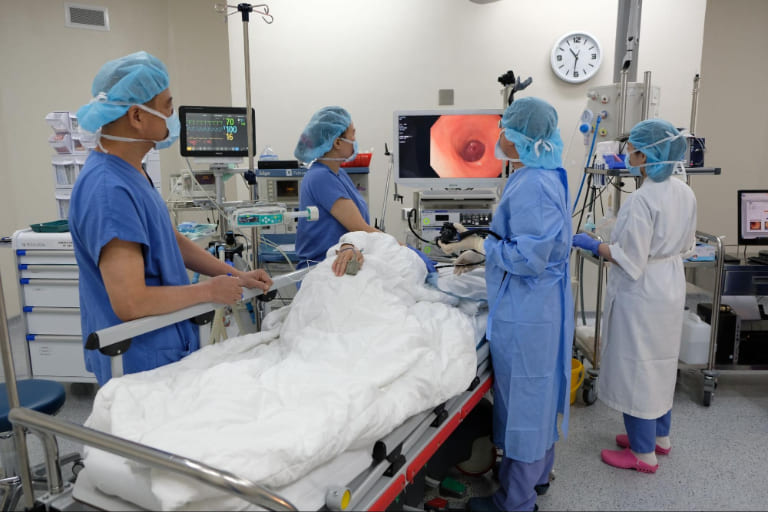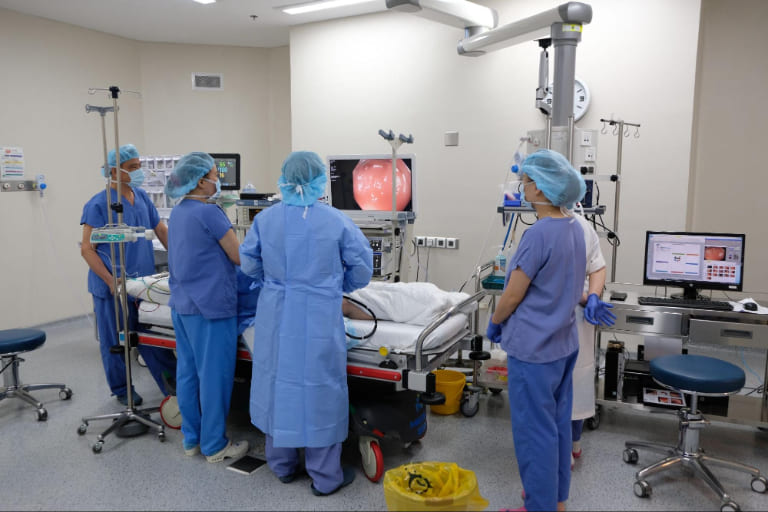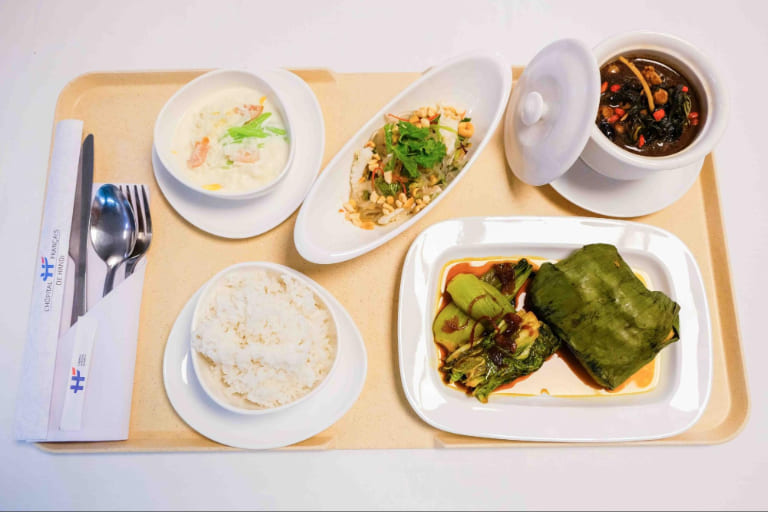Knowledge - Sun, 11/05/2023 - 15:00
Overview of endoscopy: Practices and indications for implementation
Last update 11/05/2024 - 15:00
Endoscopy is a popular method to detect diseases inside the body without invasive surgery. Furthermore, laparoscopic surgery is also safer than open surgery.

Endoscopy is a popular method to detect diseases inside the body without invasive surgery. Furthermore, laparoscopic surgery is also safer than open surgery.
Popular endoscopic techniques today
Currently, there are many new endoscopic techniques that help increase the ability to detect diseases such as Radial endoscopic ultrasound (EUS) and NBI endoscopy. Below is a comparison table of endoscopic techniques:
| Endoscopic Techniques | Advantages | Disadvantages |
| Capsule endoscopy |
|
|
| NBI endoscopy |
|
|
| Endoscopic retrograde cholangiopancreatography (ERCP) |
|
|
| Radial endoscopic ultrasound (EUS) |
|
|
Above are some common endoscopic techniques. However, some public hospitals are not equipped with these techniques. You can contact HFH for advice on the latest endoscopic techniques by contacting us at our hotline: 024.3574.1111.

What diseases can endoscopy detect?
Depending on endoscope function, there are currently many popular endoscopic techniques used to diagnose and treat digestive diseases. Here are some common endoscopic techniques:
Percutaneous endoscopic gastrostomy (PEG)
Percutaneous endoscopic gastrostomy is a method that uses a flexible tube with a video camera attached to diagnose problems inside the stomach. PEG does not require extensive surgery. This helps minimize patient pain and reduces the risk of infection and complications after surgery.
PEG takes from 10 to 30 minutes, depending on the pathology. It helps detect diseases such as stomach ulcers, stomach polyps, stomach cancer, etc.
There are many methods of percutaneous endoscopic gastrostomy including regular gastric endoscopy, anesthetized gastric endoscopy and NBI technology gastric endoscopy.

Anal endoscope
Similar to PEG, anal endoscope uses a long flexible tube with a camera and light to observe the anus and rectum. This method is applied to patients with symptoms such as: bowel disorders, Crohn's disease, anal fistula, polyps, ulcerative colitis, etc.
The patient must prepare by cleaning the rectum 3 hours before their endoscopy. Total anal endoscopy time is from 5m - 15m.
ENT endoscopy
Ear endoscope belongs to the specialty of otolaryngology. This is a method to help check ear diseases such as otitis externa, otitis media, and foreign objects in the ear. Patients need to have an otoscopy performed when they experience ear symptoms such as: tinnitus, sudden deafness, itchy ears or pain in the ears.
In addition, the ENT endoscopy specialty also includes services such as endoscopic sinusitis, endoscopic sinus surgery, or diseases related to the respiratory system.

Best practices for performing endoscopy procedures
Common endoscopy procedures usually take place in the following 3 steps:
Step 1: Preparation before endoscopy
Before performing endoscopy, patients need to mentally prepare and prepare documents according to the doctor's instructions.
- Consulting and explanation: The doctor will explain the procedure and possible risks to the patient. The patient will need to sign a statement agreeing to have the procedure performed.
- Health check: Patients may need blood pressure checks and blood tests to ensure they are fit to undergo endoscopy.
Step 2: During endoscopy
The endoscopy process usually takes 5 - 15 minutes. For endoscopic surgery, it takes 30 - 60 minutes.
- Anesthesia: Depending on the type of endoscopy and the patient's health condition, the doctor may use local anesthesia or general anesthesia to reduce discomfort.
- Inserting the endoscope into the body: The doctor will use a soft endoscope, equipped with a camera and light, and insert it through the mouth or anus into the organ that needs to be examined. This process usually lasts about 15-30 minutes.
- Observe and take pictures: The doctor will observe the image from the camera on the screen and can take pictures or video to record any abnormalities.
- Performing surgery: For surgical treatments such as endoscopic plantar fasciitis surgery, endoscopic sinus surgery, etc., the doctor will perform surgery depending on the condition.
- Taking a biopsy sample: If necessary, your doctor may take small tissue samples from suspicious areas for further testing.

Step 3: After endoscopy
To ensure health after endoscopy, patients need to follow the instructions of a specialist.
- Monitoring and rest: The patient will be monitored for a short period of time to ensure there are no complications after the procedure. If anesthesia is used, the patient needs time to fully wake up before leaving.
- Care instructions: Your doctor will provide instructions about your diet and signs to watch for after your colonoscopy. If there are unusual symptoms such as pain, fever, or bleeding, the patient should immediately contact a doctor.
Pre- and post-endoscopy care considerations
Pre- and post-endoscopy care considerations are important to ensure safety and effectiveness. Here are some important notes:
Pre - endoscopy
Notes before endoscopy will be informed to you by your doctor during your consultation appointment.
- Inform your doctor about your medical conditions and medications you are using: This helps your doctor make appropriate prescriptions.
- Fasting from food and drink: Usually you must fast at least 6-8 hours before the procedure.
- Colon cleansing: For colonoscopy, it is necessary to clean the intestines according to your doctor's instructions.
Post - endoscopy
After endoscopy, the patient needs to rest to recover.
- Rest: Rest for at least 1-2 hours after the procedure to allow your body to recover.
- Drink plenty of water: Drink plenty of water to help the body eliminate anesthetics.
- Symptom monitoring: Monitor for unusual signs and notify your doctor if necessary.

By understanding the steps and precautions, you can reduce anxiety and ensure the process goes smoothly. If you have any questions, please contact Viet Phap Hospital for further advice.



